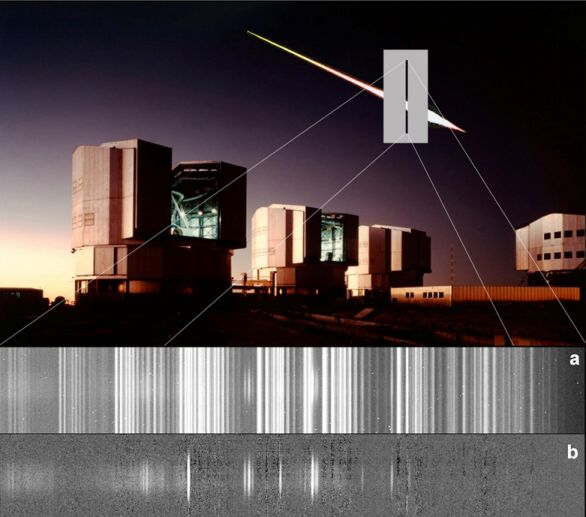Explanation: Chasing the brief flash of a meteor trail across the sky with a very large telescope is a nearly impossible task. But on May 12, 2002, astronomers got lucky, as a bright meteor chanced across the narrow slit of their spectrograph at the Paranal Observatory. At the time, the spectrograph was being used to study the light from a supernova, separating and recording the many near-infrared emission lines produced by atoms in the distant stellar explosion. Below this artistic montage of a meteor streak and Very Large Telescope units at Paranal, panel a shows the resulting spectrum of both the supernova and the May 12 meteor combined. Panel b shows the emission spectrum of the meteor alone, after subtracting away the supernova and background contributions. The meteor emission is due to colliding oxygen and nitrogen atoms and molecules in the superheated air along the glowing trail at an altitude of about 100 kilometers.
1999 2000 2001 2002 2003 2004 2005 2006 2007 2008 2009 2010 2011 2012 2013 2014 2015 2016 2017 2018 2019 2020 2021 2022 2023 2024 2025 |
Yanvar' Fevral' Mart Aprel' Mai Iyun' Iyul' Avgust Sentyabr' Oktyabr' Noyabr' Dekabr' |
NASA Web Site Statements, Warnings, and Disclaimers
NASA Official: Jay Norris. Specific rights apply.
A service of: LHEA at NASA / GSFC
& Michigan Tech. U.
|
Publikacii s klyuchevymi slovami:
meteor - spectrum - Meteor - Spektr
Publikacii so slovami: meteor - spectrum - Meteor - Spektr | |
Sm. takzhe:
Vse publikacii na tu zhe temu >> | |
